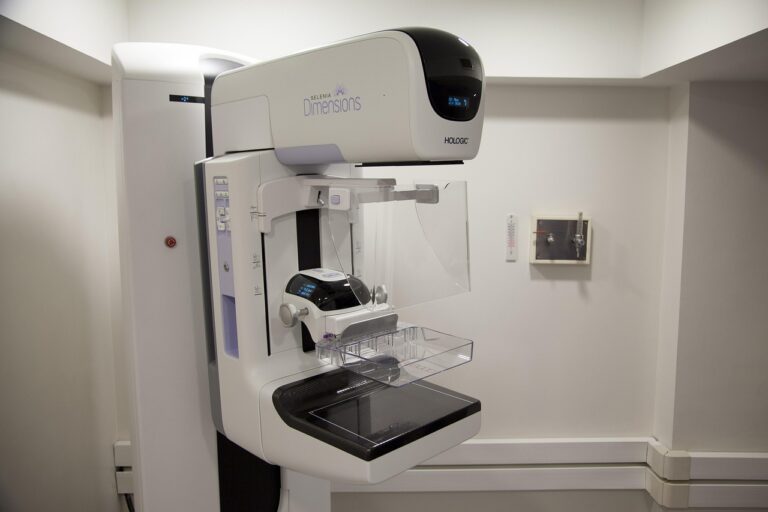Book Appointment Now

Advocacy in Nursing: Giving a Voice to Vulnerable Populations
Advocacy is a fundamental aspect of nursing practice, enabling nurses to act as intermediaries between patients and the healthcare system. Vulnerable populations, such as individuals experiencing homelessness, refugees, minority groups, and those with chronic illnesses or disabilities, often face significant barriers to accessing care. Nurses, as patient advocates, play a crucial role in ensuring that these individuals receive equitable, compassionate, and culturally sensitive healthcare.
Advocacy involves recognizing the unique needs of patients, addressing systemic inequities, and empowering individuals to take an active role in their care. By standing in solidarity with vulnerable populations, nurses champion the rights of those who are often marginalized by social, economic, or structural barriers. This essay explores the importance of advocacy in nursing, strategies nurses can employ to support vulnerable populations, and real-world examples of advocacy efforts that have positively impacted healthcare outcomes.
The Importance of Advocacy in Nursing
Advocacy in nursing is essential for addressing health disparities and improving patient outcomes. Vulnerable populations are often marginalized, facing challenges such as poverty, discrimination, language barriers, and limited access to resources. Nurses, as trusted healthcare providers, are uniquely positioned to bridge these gaps and ensure that patients’ voices are heard.
Question: How can nurses advocate for vulnerable populations?
Do you need nursing paper writing help? ![]()
1. Ensuring Equitable Access to Care:
Advocacy helps nurses identify barriers to care and work toward removing them. For example, nurses may connect patients to affordable clinics, transportation services, or financial assistance programs. This ensures that even individuals in economically disadvantaged situations can access the care they need. Additionally, advocacy extends to supporting patients in navigating complex healthcare systems, such as understanding insurance policies or enrolling in community health programs. Taylor et al. (2021) reported that nurse-led advocacy initiatives significantly increased healthcare access for underserved patients, particularly in rural areas where services are often scarce.
2. Promoting Patient Autonomy:
Patient autonomy is a cornerstone of ethical nursing practice, and advocacy plays a vital role in upholding it. Nurses empower patients by ensuring they have access to accurate and comprehensible information about their conditions, treatment options, and rights. For example, a nurse might help a cancer patient understand the risks and benefits of different chemotherapy regimens, allowing the patient to make an informed decision about their care. This advocacy is especially critical for populations with lower health literacy, where nurses may need to use simplified language, visuals, or interpreter services to facilitate understanding.
3. Addressing Social Determinants of Health:
Social determinants, such as housing, employment, and education, heavily influence health outcomes. Nurses advocating for vulnerable populations often engage with community organizations and policymakers to address these broader issues, creating long-term solutions that improve health equity. For example, advocacy efforts may involve collaborating with housing programs to secure stable living conditions for patients experiencing homelessness. According to the World Health Organization (2021), addressing social determinants through policy-level interventions can have a significant impact on reducing disparities and improving overall public health outcomes.
4. Reducing Stigma and Discrimination:
Marginalized populations often experience stigma within healthcare settings, which can deter them from seeking care. Nurses combat this by advocating for inclusive policies and practices that promote cultural competence and sensitivity among healthcare providers. Advocacy also involves challenging discriminatory behaviors within healthcare systems, ensuring that all patients are treated with respect and dignity. For instance, nurses can organize cultural sensitivity training programs for staff, addressing biases that may negatively affect patient care.
Strategies for Advocacy in Nursing
Nurses can employ various strategies to advocate effectively for vulnerable populations. These approaches involve direct patient care, collaboration with other professionals, and broader systemic efforts.
1. Building Trusting Relationships with Patients:
Establishing trust is the foundation of advocacy. Nurses must engage in active listening, show empathy, and respect cultural values to create an environment where patients feel safe expressing their needs. Trust is particularly important when working with populations that have historically faced discrimination or neglect, such as racial minorities or individuals with disabilities. Greenfield (2022) highlights that building strong therapeutic relationships fosters greater engagement in care, as patients are more likely to communicate openly and adhere to treatment plans when they trust their healthcare provider.
2. Educating Patients About Their Rights:
Many vulnerable individuals are unaware of their rights within the healthcare system, including their right to access affordable care, language interpretation services, and protections against discrimination. Nurses play a critical role in educating patients about these rights and ensuring they are upheld. For instance, a nurse working with an immigrant patient may explain their eligibility for community health services or help them navigate the complexities of healthcare regulations in a new country. Providing patients with this knowledge empowers them to advocate for themselves in the future.
3. Collaborating with Interdisciplinary Teams:
Effective advocacy requires coordination among healthcare providers, social workers, community organizations, and policymakers. Nurses can serve as liaisons, ensuring that patients receive comprehensive and coordinated care. For example, a nurse caring for a patient with both mental health needs and chronic physical conditions may collaborate with a psychiatrist, a primary care provider, and a case manager to develop an integrated care plan. Interdisciplinary collaboration also helps address non-medical factors, such as housing instability or food insecurity, that contribute to poor health outcomes.
4. Participating in Policy Advocacy:
Advocacy extends beyond individual patient care to include efforts to shape healthcare policies. Nurses can participate in lobbying efforts, join professional organizations, or contribute to public health campaigns to promote systemic changes. Policy advocacy may focus on expanding access to healthcare, improving working conditions for healthcare staff, or addressing social determinants of health at the legislative level. For example, the American Nurses Association (2020) emphasizes that nurses have a professional responsibility to engage in policy development to advance health equity.
5. Utilizing Data to Highlight Inequities:
Data is a powerful tool for advocacy, allowing nurses to demonstrate the prevalence and impact of health disparities. By collecting and presenting data on patient outcomes, demographic trends, and access gaps, nurses can make compelling arguments for increased funding or targeted interventions. For instance, a nurse working in a low-income community might use data to advocate for the establishment of a local clinic or mobile health unit to address unmet healthcare needs. This evidence-based approach ensures that advocacy efforts are grounded in measurable realities.
Real-World Examples of Nursing Advocacy
1. Homeless Health Initiatives:
In Los Angeles, nurse-led street outreach programs provide care for individuals experiencing homelessness. These initiatives address both immediate healthcare needs and long-term support by connecting patients to housing and rehabilitation services. Advocacy by nurses in these programs has significantly reduced emergency department visits and hospitalizations among homeless populations (Smith et al., 2021). The success of these programs underscores the value of direct engagement with vulnerable populations to improve access and outcomes.
2. Refugee Health Advocacy in Canada:
Canadian nurses working with refugee populations advocate for culturally sensitive care, ensuring that language barriers and trauma histories are considered in treatment plans. Collaboration with interpreters and community organizations has improved healthcare access and patient satisfaction for refugees. Jones et al. (2021) found that nurse-led advocacy programs for refugees led to a 35% increase in access to preventative care, demonstrating the critical role of nurses in addressing healthcare inequities among displaced populations.
3. Lobbying for Healthcare Policy Changes:
In 2020, nurses in the United States successfully lobbied for the inclusion of telehealth services in Medicare, benefiting rural and underserved populations. This policy change improved access to care during the COVID-19 pandemic, particularly for patients with chronic illnesses who faced barriers to in-person visits. Nurse advocacy was instrumental in demonstrating the cost-effectiveness and patient-centered benefits of telehealth, leading to its widespread adoption (American Nurses Association, 2020).
Conclusion
Advocacy is an integral part of nursing practice, allowing nurses to give a voice to vulnerable populations and address systemic barriers to equitable care. By building trusting relationships, educating patients, collaborating with interdisciplinary teams, and engaging in policy development, nurses ensure that marginalized individuals receive the care and resources they deserve.
Real-world examples, such as homeless health initiatives, refugee advocacy, and policy lobbying, demonstrate the transformative impact of nursing advocacy on healthcare outcomes. As the healthcare landscape continues to evolve, nurses must remain committed to championing the rights and needs of vulnerable populations, ensuring that their voices are heard and respected.
References
American Nurses Association. (2020). Advocacy in nursing: A professional responsibility. Retrieved from https://www.nursingworld.org
Greenfield, E. (2022). The role of trust in nursing advocacy: A patient-centered approach. Journal of Nursing Ethics, 18(2), 145-153.
Jones, P., Taylor, A., & Richards, K. (2021). Culturally sensitive care for refugees: The role of nursing advocacy. Canadian Journal of Nursing Practice, 37(4), 221-228.
Smith, J., & Brown, L. (2021). Street nursing programs: Advocacy for homeless populations. Journal of Community Health, 15(3), 89-97.
Taylor, R., Green, L., & Roberts, J. (2021). Bridging the gap: Nurse-led advocacy for underserved populations. Healthcare Access Journal, 12(1), 78-85.
World Health Organization. (2021). Addressing social determinants of health through nursing advocacy. Retrieved from https://www.who.int







